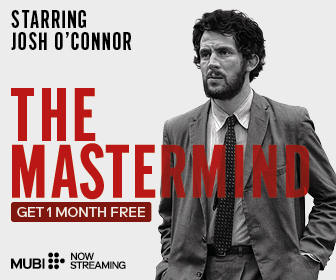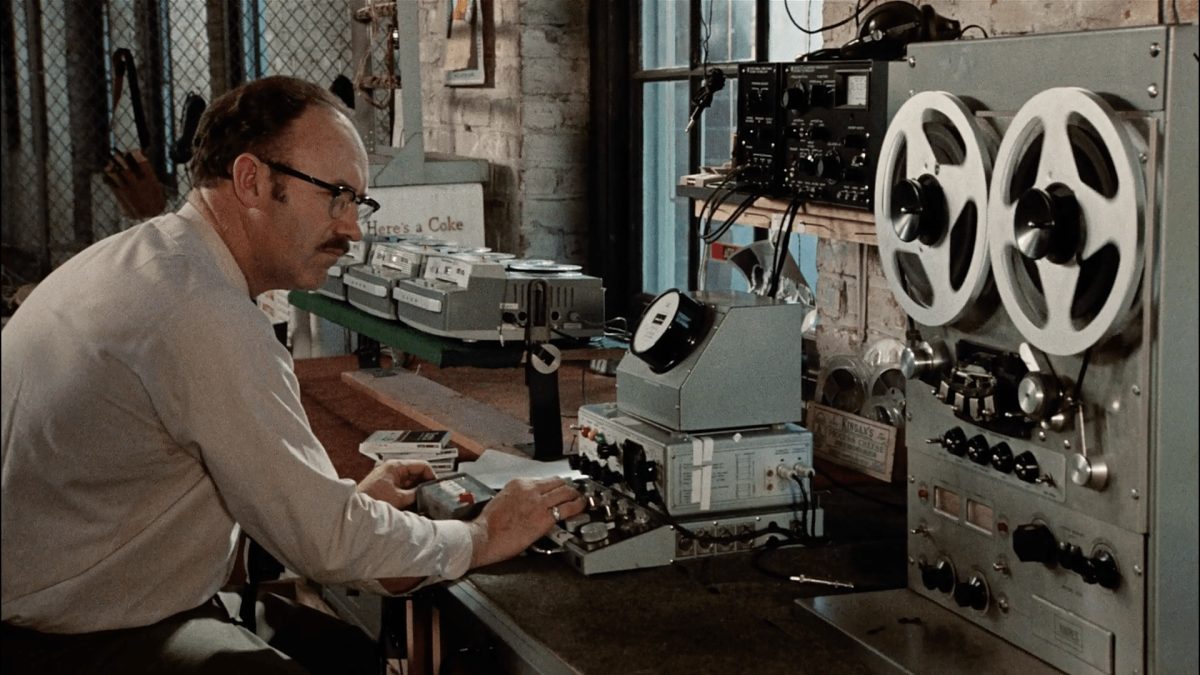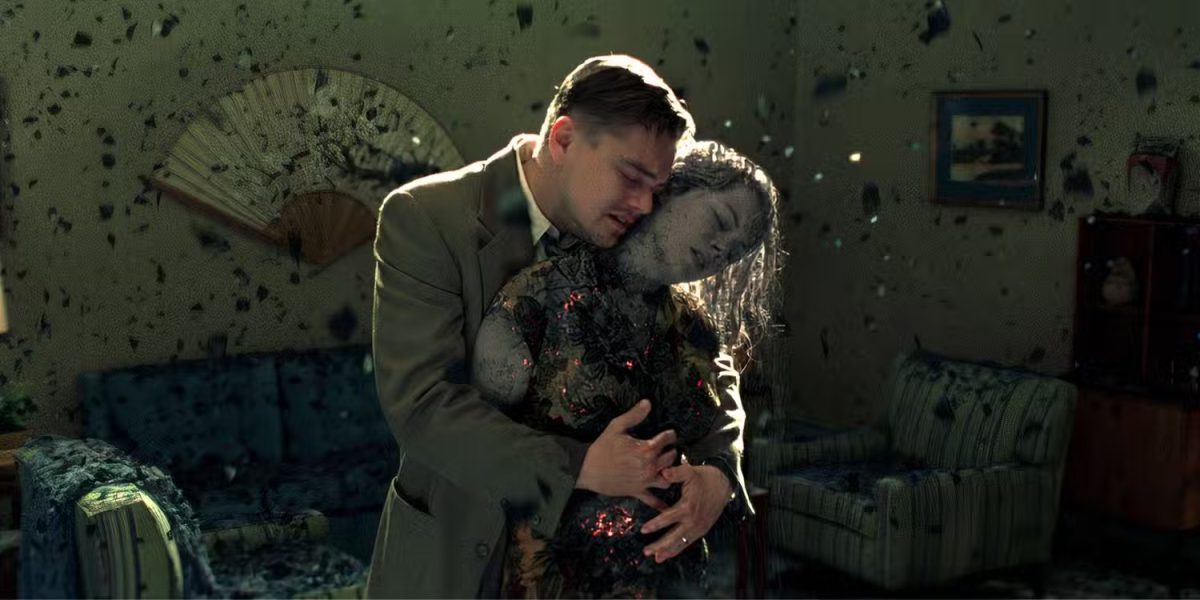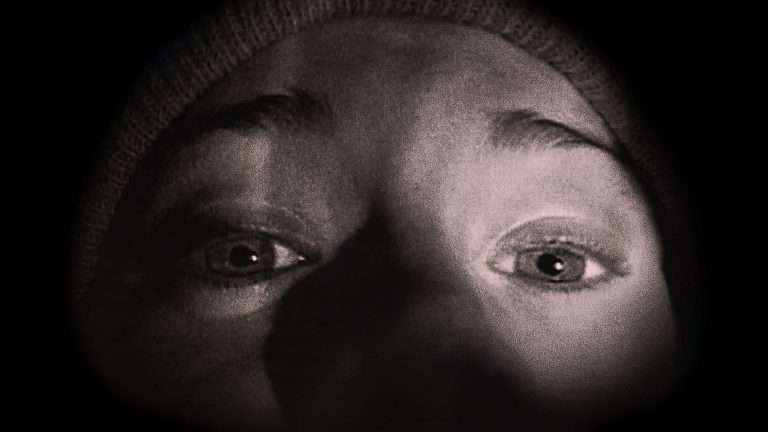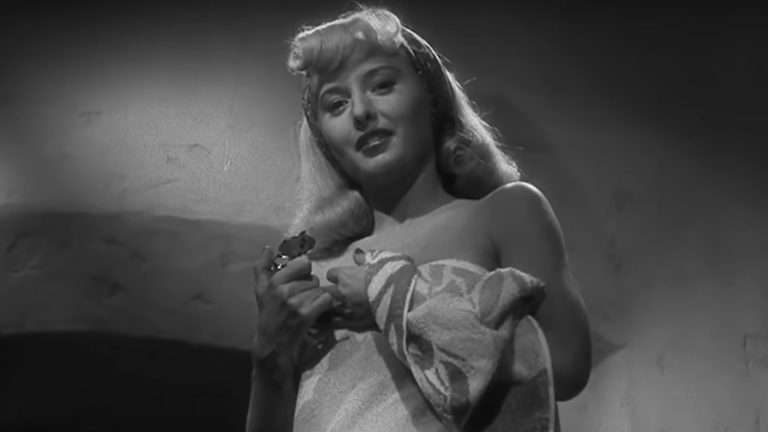The unreliable narrator remains one of cinema’s most potent narrative devices, transforming passive spectators into active collaborators in deciphering a film’s meaning. This storytelling strategy—built on withholding, distorting, or outright fabricating information—has undergone a remarkable evolution, from its smoky film-noir beginnings to the intricate psychological thrillers of today.
From the shadow-drenched alleyways of 1940s crime dramas to the labyrinthine plots of “Shutter Island” (2010) and “Gone Girl” (2014), the technique reflects not only the changing language of cinema but also the growing sophistication of audiences, who’ve learned to question and reinterpret everything they’re shown.
Film noir came about in the 1940s as a uniquely American cinema style. It was characterised by moral ambiguity, visual darkness, and a worldview that was fatalistic at best. Noir’s relationship with the unreliable narrator was pretty much a given, seeing as it was so preoccupied with deception, secret motives, and how impossible it was to know the truth in such a corrupt world. The earlier noir movies utilized voice-over quite extensively, and a framework was created where the audience was receiving information through one, usually compromised, source.
Billy Wilder’s masterpiece “Double Indemnity” (1944) highlights the new form of cinematic unreliability. Fred MacMurray, playing Walter Neff, delivers a confession, bleeding out in an office, and this frames the whole narrative. He doesn’t deliberately lie to his audience, but his perspective is skewed by his guilt and obsessions, along with his desire to build the version of events that led to his downfall. As an audience, we get a story told by a dying man who is trying to make sense of his own moral collapse. We have to question if his account is accurate in its depiction of Phyllis Dietrichson’s manipulation, or if he is trying to absolve himself of all responsibility.
Both “Murder, My Sweet” (1944) and “Laura” (1944) pushed the boundaries of cinematic storytelling, using dream sequences, hallucinations, and subjective camera work to dissolve the line between objective reality and personal perception. In “Laura,” Detective Mark McPherson—portrayed by Dana Andrews—gradually slips into an obsessive reverie, his investigation of a murder case merging with a romantic fantasy centered on the enigmatic portrait of the titular woman. Meanwhile, in “Murder, My Sweet,” when Philip Marlowe—played by Dick Powell—is drugged, the film uses visual distortions, shifting focus, and warped imagery to immerse the audience directly in his disoriented, fractured state of mind.
These early experimentations with the unreliable narrative aspects were pretty straightforward, with the deceptions mainly about information being withheld, or limited perspectives rather than deeper questions about the nature of reality itself. The audiences of the 40s and 50s were still accustomed to the classic Hollywood narration, wherein the camera was an impartial observer, and flashbacks were truthful recollections. The unreliability used in noir stayed mostly within these conventions. They bent the audience’s trust in the cinematic narrative but didn’t break it.
The 1960s and 1970s brought about a major evolution in the unreliable narrator technique. Inspired by the arthouse cinema of Europe, along with modernism in the literary world, filmmakers began to question not only the perspective of the character but also how reliable cinematic representation itself was. This period in movie history saw an increase in the number of narratives that left the audience deliberately puzzled or misled about basic aspects of the characters or the plot. “Psycho” (1960) and “Peeping Tom” (1960) were watershed moments in cinematic history.
They introduced psychological instability as a new axis of narrative unreliability. In “Psycho” (1960), Alfred Hitchcock’s iconic shower scene doesn’t merely jolt the audience with its brutality—it detonates the narrative structure itself. By killing off the character we’ve been aligned with, the film forces a sudden rupture in identification and perspective. When Norman Bates’ fractured psyche finally comes into focus, everything leading up to that moment is redefined and reinterpreted. Yet, Hitchcock never cheats the viewer; he lays out subtle clues and maintains a coherent underlying reality, letting the ultimate revelation hit with both shock and inevitability.
“The Conversation” (1974) introduced a technological aspect into the equation, with the recording and playback of surveillance tapes central to how unreliable the narrative is. Harry Caul, played here by Gene Hackman, is obsessed with listening over and over to a recorded conversation, revealing how interpretation can shape meaning, how the context and emphasis spoken can totally transform our understanding of the very same words. Francis Ford Coppola uses this as a way of examining how our need to build a rational narrative can make us hear what we want to hear, but not what actually exists.
Read More: 20 Indian Murder Mystery Movies That Keep The Viewers Hooked
By the 1990s, filmmakers had fully absorbed postmodern skepticism toward absolute truth, crafting narratives that deliberately blurred the boundaries between reality and illusion. In “Jacob’s Ladder” (1990), this sensibility is pushed to a striking extreme: the entire story unfolds within a liminal, unstable space—hovering between reality, hallucination, and the threshold of death. The film denies the viewer any solid footing, leaving us unable to pin down what objectively “happened.” Instead, it compels us to hold multiple, even contradictory interpretations at once, turning the act of watching into an unsettling exercise in uncertainty.
In the late 1990s and early 2000s, cinema experienced a surge of twist-driven narratives that fundamentally reshaped how audiences engaged with films. Works like “The Sixth Sense” (1999), “Fight Club” (1999), “Memento” (2000), and “The Others” (2001) didn’t just surprise viewers—they trained them to become detectives, scanning every frame for hidden clues and narrative sleight of hand.
M. Night Shyamalan’s “The Sixth Sense” marked a turning point. The revelation that Malcolm Crowe, played by Bruce Willis, had been dead all along forced audiences to mentally rewind the entire film, reevaluating every moment in a new light. Crucially, Shyamalan never cheats: the evidence is all there, but clever misdirection and genre expectations lead us away from the truth. The film’s phenomenal success not only made the twist ending a cultural touchstone but also changed how viewers approached storytelling itself—teaching them to scrutinize what’s omitted as much as what’s revealed.
David Fincher’s “Fight Club” took the unreliable narrator in a totally different direction with an exploration of dissociative identity disorder, along with masculine anxieties. The revelation that Brad Pitt’s Tyler Durden exists only in the mind of the narrator changes what seemed to be a story about anti-consumer culture into a psychological portrait of self-destruction and fracture. Fincher’s direction subtly places Tyler in a few frames shortly before the narrator “meets” him, with attentive viewers being rewarded, while those expecting a conventional narrative are deceived.
Perhaps the most radical experiment of this period is Christopher Nolan’s “Memento,” playing its narrative in reverse chronology as its protagonist suffers from anterograde amnesia. Nolan creates a movie where the audience shares the confusion of Leonard Shelby, played by Guy Pearce. We are not able to trust any information supplied to us, including Leonard’s tattoos and the Polaroids he takes. Nolan is suggesting that memory itself is unreliable, that we build narratives about ourselves that have no real relationship to objective truth, but this narrative building is needed for purpose and identity, even if it leads to tragedy.
With these movies came a new competency in audience participation. We learned not to trust the narrator, to keep our eyes open for inconsistencies, and to question how reliable what we were being shown really was. This changed the contract between viewer and filmmaker on a fundamental level, with a simple twist ending no longer effective, and more elaborate narrative structures needed in order to achieve real surprise.
And so by 2010, when Martin Scorsese made “Shutter Island,” audiences had become so used to unreliable narrators that the movie could play with these tropes in newer ways. Based on the novel by Dennis Lehane, we follow U.S Marshal Teddy Daniels, played by Leonardo DiCaprio, investigating a disappearance at a hospital for the criminally insane. We come to learn Teddy is, in actuality, Andrew Laeddis, a patient at the hospital whose delusions have been indulged as an experimental form of therapy.
What makes “Shutter Island” so memorable in the evolution of unreliable narration is how aware it is in regards to the sophistication of its audience. Scorsese inserts obvious clues to the true nature of the film; there are anachronistic elements, impossibly neat explanations, characters who seem to be acting rather than behaving naturally, and these alert the savvy viewer to the deception. The movie works on multiple levels: a psychological thriller for those just accepting the surface narrative, a puzzle for those who detect the unreliability, and a tragedy about the nature of guilt and delusion for those who understand the whole context.
On top of that, the final line of the movie, “Which would be worse: to live as a monster, or to die as a good man?” leaves it ambiguous as to whether Andrew has honestly recovered or if he has chosen to retreat into his delusion as a way to assuage his guilt. Another layer of unreliability is added on, which makes even the “true” explanation unstable. Scorsese knows that modern audiences will see a twist coming and uses this as a way to create additional depth, instead of just attempting to deceive.
Also Read: 10 Great Psychological Thriller Movies You Can Stream on Hulu Right Now
“Shutter Island” also shows us how unreliable narration can be integrated with serious thematic concerns. It uses its narrative structure to examine guilt, trauma, and the stories we tell ourselves to survive the most painful truths. The deception here is not just a gimmick, but it is vital to the story’s examination of how the mind protects itself using fiction.
In “Gone Girl” (2014), adapted from the novel by Gillian Flynn, we encounter perhaps the most sophisticated deployment of unreliable narration in contemporary cinema. Here, unreliability isn’t simply a device to obscure information or deliver a shocking twist—it becomes the very subject of the film. Fincher weaponizes narrative control itself, exposing how stories shape perception, power, and truth within both society and intimate relationships.
The film’s structure is elegantly duplicitous. The first act unfolds along two timelines: the present-day investigation into the disappearance of Amy Dunne, portrayed by Rosamund Pike, and flashbacks detailing her seemingly unraveling marriage, recounted through Amy’s diary. These entries paint Nick, played by Ben Affleck, as volatile and dangerous, steering the audience toward the assumption of foul play.
But when the façade cracks and we learn that Amy has meticulously staged her own disappearance—and fabricated the diary—the unreliable narration is revealed not as a byproduct of psychological instability or limited perspective, but as a calculated act of manipulation. It’s storytelling as a weapon.
What makes “Gone Girl” stand out is how brilliantly it highlights just how unreliable narration works in our society outside the cinema. Amy completely understands how controlling the narrative means controlling reality. In the media-saturated culture, perception matters more than truth. The fictional diary, the carefully designed crime scene, along with calculated public appearances, all show an innate awareness of how stories work and how easily audiences can be manipulated through a carefully built fiction.
The movie also involves the audience in its deceptions. There were reports of viewers feeling angry at being manipulated through Amy’s false narrative and experiencing the same betrayal Nick felt. But this level of reaction shows how deeply invested we are in what we’re being shown. Fincher and Gillian Flynn use unreliable narration not only to surprise, but also to critique our relationship with the narrative. It lays out how we are complicit in the fictions we devour.
What makes “Gone Girl” (2014) even more incisive is how it weaves gender politics into its exploration of unreliable narration. Amy doesn’t just manipulate individuals—she manipulates cultural narratives. She deftly slips into familiar archetypes: the “cool girl” who morphs into the wronged wife, the pregnant victim, the woman scorned.
These well-worn stereotypes become the very tools of her deception, turning society’s expectations of women into a weapon. Through this, David Fincher suggests that in a patriarchal society, the ability to control your own narrative is a potent form of power—one that can be wielded strategically, even ruthlessly. Amy’s manipulation isn’t just personal; it’s systemic, exposing how easily collective assumptions can be hijacked and weaponized.
How cinema has evolved, from film noir to psychological thrillers, showcases a fundamentally changed relationship between audiences and filmmakers. The early audiences watching noir expected the camera to show the truth, even if it was filtered through a character’s different perspective. Today, audiences routinely expect deception, searching for clues that the narrative is flawed in some way. And so this has forced moviemakers to develop more complex strategies.
The modern psychological thriller will often use a meta-textual awareness, stating outright that audiences know the conventions of the unreliable narration. Movies like “Shutter Island” and “Gone Girl” have their narratives built around this knowledge, which in turn creates multiple layers of interpretation depending on the viewer. The unreliability becomes a theme in itself, and not just a structural choice. It begins to explore questions about narrative, identity, truth, and memory.
The rise of technology has fundamentally reshaped the way unreliability operates in cinema. With the sophistication of digital manipulation, audiences can no longer take images at face value—what appears on screen may not be what was ever physically filmed. Online discourse further amplifies this shift, turning film analysis into a collective act: viewers dissect frames, share theories, and exchange interpretations, often well before a film officially premieres. In this environment of communal scrutiny, every inconsistency, hidden clue, or visual sleight of hand is catalogued and debated in real time.
What began as a narrative device to heighten mystery has evolved into a lens through which filmmakers probe deeper questions about truth, perception, and the stories we tell ourselves. Contemporary directors are acutely aware of how savvy their audiences have become, and they use unreliability not merely as a trick, but as a way to explore the fragility of meaning in a world where truth is constantly contested and obscured.
The journey from the fog-drenched streets of 1940s film noir to the razor-sharp narrative manipulations of “Gone Girl” marks more than just a technical progression—it reflects a profound transformation in cinema’s relationship with its viewers. Audiences are no longer passive recipients of a story; they are active participants, interrogating, interpreting, and reconstructing the narratives laid before them. Unreliability has ceased to be a mere plot device—it’s now a mirror held up to a culture perpetually questioning what’s real.

